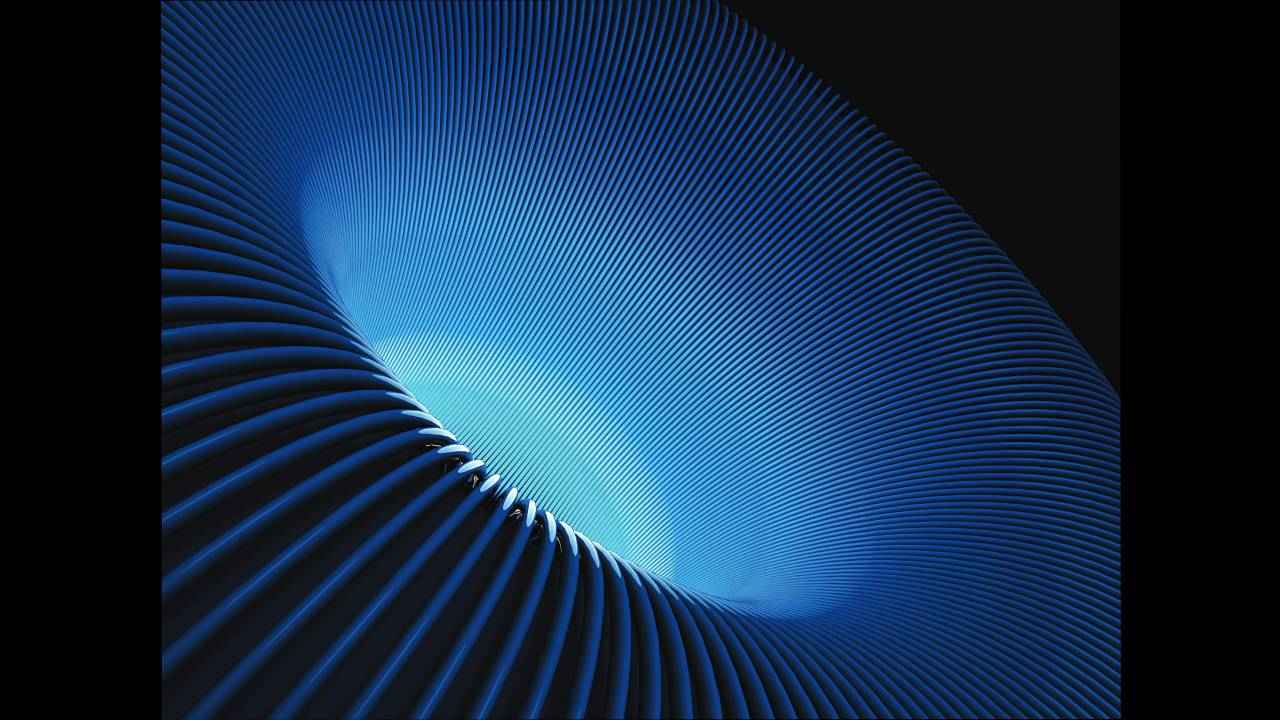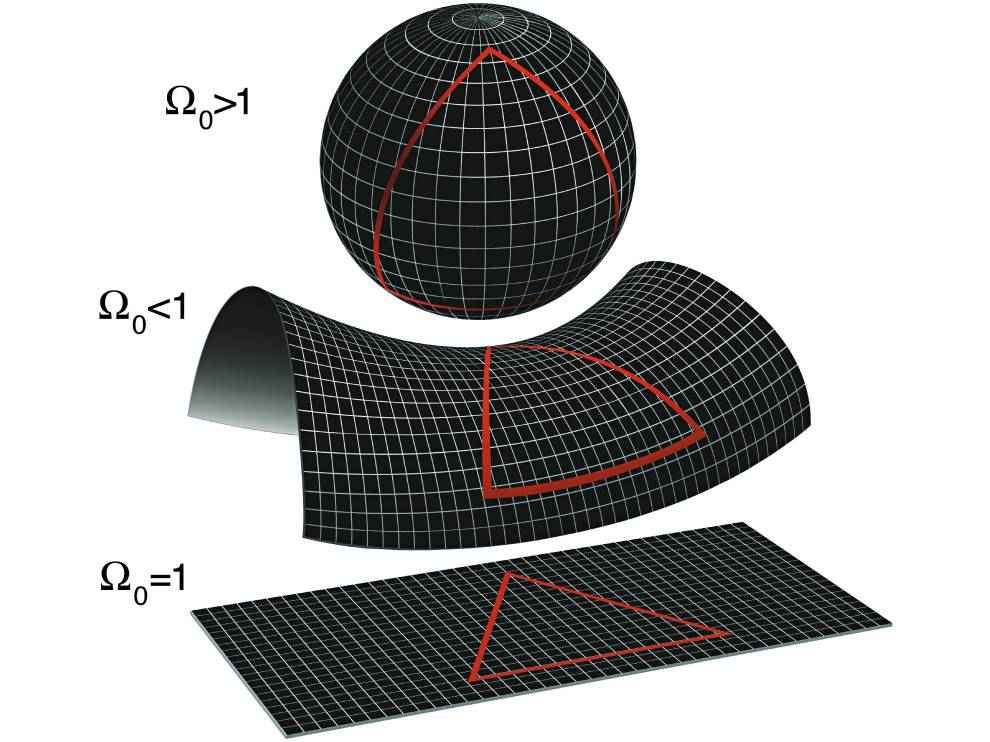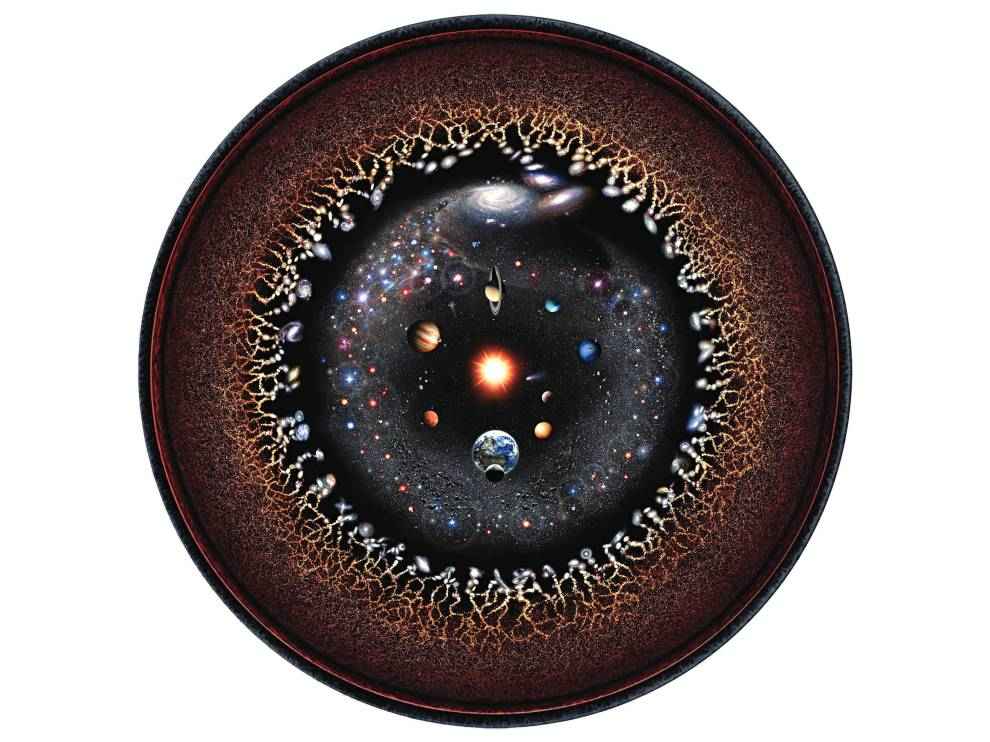Shape of the universe

One of the earliest cosmological questions to puzzle mankind, was whether the universe was finite or infinite. Throughout history, the scientific consensus seems to have swung between the two possibilities. Ancient Greek philosophers were divided on the issue, but the atomists primarily believed that the universe was infinite. However, the most influential philosophers including Plato, Aristotle and Ptolemy believed that the universe was finite. Cosmas Indicopleustes, a Greek monk argued that “The crystal-made sky sustains the heat of the Sun, the moon, and the infinite number of stars, otherwise, it would have been full of fire, and it could melt or set on fire. " If you ignore the bit about the crystal sky, this is an important observation as it makes the point that a universe with infinite stars would be on fire. In Medieval Europe, Copernicus and Kepler believed in a finite universe. Descartes and Newton, who were influential figures in classical cosmology believed in an infinite universe. Einstein argued for both a finite as well as infinite universe (though not at the same time). Around the turn of the twentieth century, a paradox had emerged, named after the German astronomer, Heinrich Wilhelm Olbers. If the universe was infinite, then it should have been full of light, uniform in all directions. There were some early proposed resolutions to the paradox. One was that there were a finite number of stars in an infinite universe. Another was that interstellar dust was obscuring the light from the stars. These are not really resolutions, because given infinite time, then the dust would also start radiating heat, and a finite number of stars in an infinite universe should still be enough to light up the sky in the night, as well as the day. The only possible resolution was that the universe is expanding so we cannot see stars beyond a certain limit, and that it has a particular age. As far as current science can tell, the last two are both true. Considering the limitations of the speed of light, the observable universe is a sphere centered around the Earth, with a radius of 46.5 billion light-years. The universe is also estimated to be around 13.799 billion years old. There are stars and galaxies that we will never be able to see. The farthest stars and galaxies that we can currently observe, will fade away in 6 billion years, after freezing in their locations in the sky, and becoming progressively redder and darker. As the universe expands, the amount of it that we can see actually reduces with the passage of time. The entire universe, even the parts beyond the observable universe, is known as the global universe. It is difficult to figure out the shape of such a universe, and it is as such an unanswered question of cosmology. However, physicists can think of the range of possible options, and pick the ones that best match the observations by astronomical instruments.
Scientists are now fairly certain that the universe is finite, because it is not entirely on fire. Now the question is what happens if you travel to the edge of the universe. The question itself is somewhat illogical. The universe encompasses everything that exists. Anything outside the universe is paradoxically, also a part of the universe. Although in everyday experience, most of the objects we encounter have an edge, it is difficult for physicists to even imagine a universe with an edge. There are some things that do not have an edge, the simplest example being the surface of the Earth. Just as someone walking endlessly in a single direction over land or water would end up where they started, a spaceship moving in an absolutely straight line would eventually end up where they started. However, the surface of the sphere is not the only possible shape of such a universe that folds in on itself. Another possible shape is the surface of a torus, or a donut shape. Think of these as three dimensional analogues of the mobius strip. One of the most interesting of these possible shapes is that the universe is shaped like a Klein bottle, an object that has a single surface without an inside or an outside, but one that can still hold liquids within it. Now if the universe were shaped like the surface of the sphere, it would be a simply connected universe. If there is a source of light and an observer, there is just one path that the light can take to reach the observer. A Klein bottle or torus shaped universe however, are what is known as “multiply connected”. This means that the light from a source, can reach the observer through multiple paths. This would be similar to standing in a hall of mirrors, with replications of the same object. We might be seeing two stars in the sky in such a universe, when actually both the stars are one and the same. Whether the universe is simply connected or multiply connected is deeply linked to another aspect of the geometry, known as curvature.
Now the curvature of the universe is different from the curvature that we experience in everyday lives. A positive curvature is spherical, a negative curvature is shaped like a saddle, while a flat surface is well, like a piece of paper. Now bear in mind that none of these geometries have edges, and all of them are finite. A simple way to understand these different curvatures is to imagine a set of parallel lines. If the parallel lines diverge because of the structure of space itself, then the universe has a negative curvature. If the lines meet themselves, or tend to converge, then the universe has a positive curvature. If however, the lines remain parallel forever, the universe is considered to be flat. You can find out the curvature of a shape by drawing parallel lines on it. For example, a torus has a flat curvature, just like a sheet of paper, because eventually, the two parallel lines drawn on it in any direction will meet each other perfectly, without diverging or converging. Measurements from the Planck spacecraft based on the density of matter in the observable universe, indicates that the Universe is flat. Now while intuitively it may seem like the only way that a flat universe is also simply connected would be for it to be infinite, but this is not the case.
While we do not know the shape of the universe, we do have evidence to suggest that it is flat and without an edge. We do not know conclusively if it is simply connected or multiply connected. Now remember that spaceship that heads out in a straight line and ends up where it started? How long the trip would take, would decide the size of the universe. That is another thing, we simply don't have the answer to.
Aditya Madanapalle
Aditya Madanapalle, has studied journalism, multimedia technologies and ancient runes, used to make the covermount DVDs when they were still a thing, but now focuses on the science stories and features. View Full Profile







